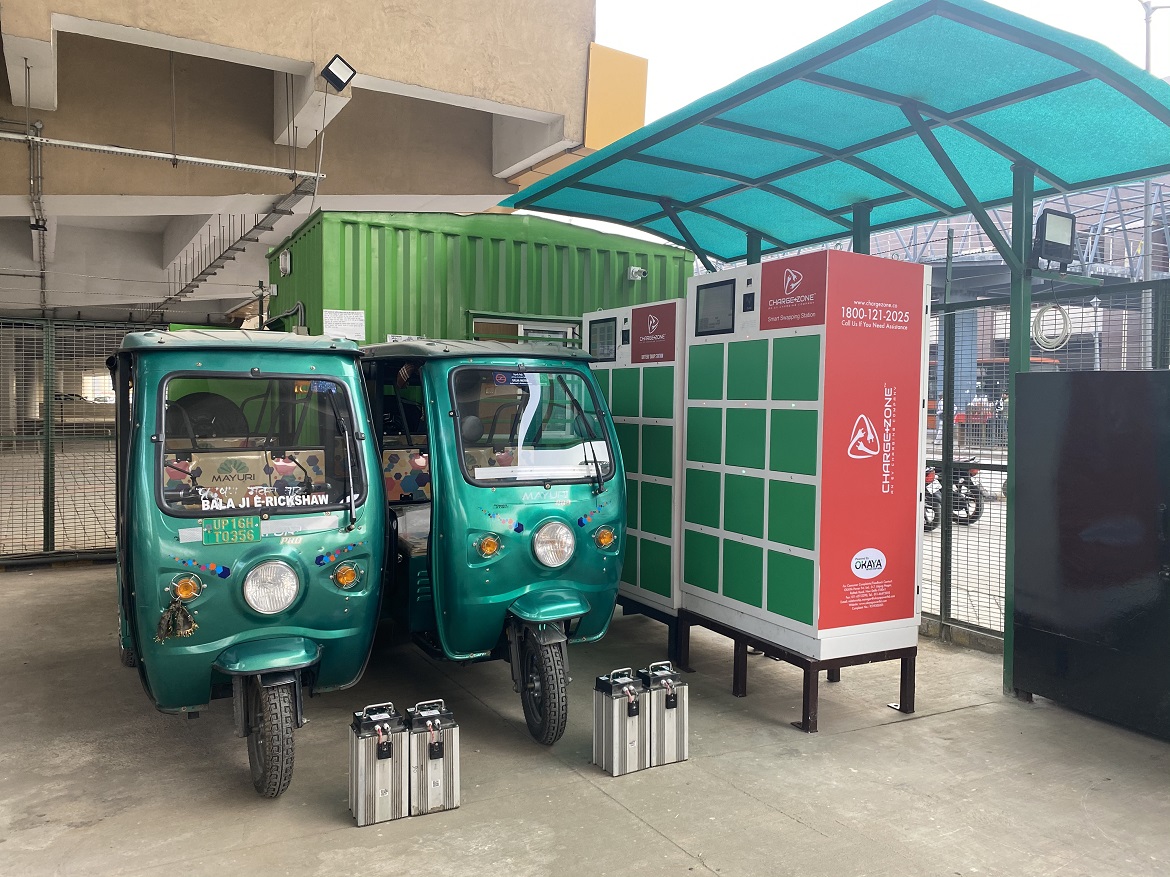Battery Swapping: An Alternative Fast Re-fueling Option for E-2Ws and E-3Ws in India

With the Indian government making persistent efforts for deeper penetration of the Electric Vehicle (EV) industry in the country, the automobile market is on the verge of transitioning to electric vehicles. It is committed to a goal of making 30% of the vehicular traffic electric by 2030. However, the discussion around EVs inexorably drifts towards charging infrastructure. The two potential models doing the rounds include plug-in charging and swapping. Currently the majority of onroad electric vehicles are two- and three-wheelers (e-2Ws, e-3Ws). When it comes to charging infrastructure, physical space in urban localities is a constant barrier making it vital that we make clever choices. This blog provides insights on the battery-swapping infrastructure for e-2Ws and e-3Ws in India.
Supportive Government Initiatives
Through the Faster Adoption and Manufacturing Hybrid and Electric Vehicles (FAME) II policy, which saw a budget outlay of INR 10,000 crore, the Government of India (GOI) extended financial support for both EVs and public charging infrastructure. Recently, GOI had notified the sale of e-2Ws and e-3Ws without batteries to reduce the high upfront cost of vehicles. However, there exists ambiguity regarding the subsidy eligibility. More so, because the GST on batteries sold separately is still 18%, as opposed to 5% on EVs. Meanwhile, several state governments have taken various steps to support battery swapping along with plug-in charging options (see Figure 1). For example, the Delhi government mentioned the 50:50 distribution of subsidy between the vehicle owner and energy operator. Further, it announced an allocation of land for the establishment of swap points at bare minimum rental lease and reimbursement of 100% State Goods and Services Tax (SGST) on purchase of advanced batteries.

The Case for Battery-swapping
According to WRI India’s TCO analysis, the low-cost e-2Ws are cheaper than petrol-2Ws and e-3Ws, and e-rickshaws are more economically viable in comparison to their Internal Combustion Engine (ICE) counterparts. High vehicle utilization has been found to increase the economic viability of EVs, which implies a significant business opportunity for both e-3Ws and e-2Ws in commercial applications, such as last-mile delivery and connectivity.
To address the anxiety associated with the lack of charging infrastructure, Original Equipment Manufacturers (OEMs), the vehicle aggregators, and other charging infrastructure players are developing a dense network of charging points. The majority of India's existing public charging infrastructure is more appropriate for the four-wheeler (4W) segment, and provides little use for the e-2Ws and e-3Ws, owing to their lower power requirement. Plug-in charging is quite time-consuming, and can reduce the operational efficiency of vehicles in commercial applications. Additionally, fast plug-in charging of batteries can lead to rapid battery degradation, resulting in the reduction of battery life. Here, battery-swapping emerges as a viable alternative, since it offers a similar re-fueling experience as ICE-vehicles while reducing the high upfront cost of the vehicle by 40-50%. Also, the discharged batteries are charged in a controlled environment during battery-swapping, which helps to extend battery life and minimize safety concerns.
A shift towards EVs presents a lucrative opportunity for India to reduce its carbon footprint, which can be further improved by integrating renewable energy into the EV sector. Used EV batteries with approximately 70-80% of their initial capacity can be re-purposed for a second-life for use in stationary applications like solar-powered battery swapping stations, and mobile energy storage applications. In India, the swapping market is predicted to generate a revenue of USD 6.1 million by 2030, exhibiting a 31.3% CAGR during the forecast period (2020–30).
Currently, the majority of the e-2Ws in the market are equipped with detachable batteries, which can be charged either through plug-in or battery-swapping. From Zypp, a Gurugram-based start-up, a rider can rent an e-scooter for INR 109 per day to INR 3,600 per month. The vehicle offers a range of up to 75 km, with a single swap costing INR 10. For e-rickshaws, the consumer needs to pay INR 220 for a single swap and INR 400 for multiple swaps within 24 hours for the same e-rickshaw. Under 'e-drive initiative' of Bharat Petroleum Corporation Limited (BPCL), the company will bear the cost of twin Li-ion batteries (each unit is 1.5 kWh) per e-rickshaw, which is INR 60,000–65,000, and the driver only needs to pay a usage fee of INR350–450 per swap, which usually provides a driving range of 50-55 km.
Summary and Way Forward
Battery swapping has the potential to be the most economical alternative for efficient fast charging infrastructure, especially for commercial fleet operators in the e-2W and e-3W segments in India, who experience high vehicle utilization during operating hours. Additionally, the integration of second-life application of used EV batteries can offer an additional source of revenue in Battery Swapping Station (BSS) business models. Although some states have already taken steps to incorporate battery-swapping in their EV policies, clarity in that of the centre’s is yet to be achieved. The following are some steps that can help in the growth of the battery swapping model in India:
- Battery-swapping can be made eligible for FAME 2 subsidy to reduce the cost of batteries (including reducing the GST from 18% to 5% on EVs batteries) and charging infrastructure for energy providers.
- To enable their deeper penetration into the market and reduce the friction between the vehicle OEM, battery provider, and BS service provider, the government must work towards the standardization of batteries for the e-2Ws and e-3Ws.
- To ensure consumer confidence, BS service providers must prioritize the reliability and safety of the swappable battery packs, here government can support the development of guidelines for the safety and reliability of the batteries.
Arya Bhat and Vishal Srivastava are interns with the EV team at WRI India.
Views expressed are the authors’ own.
